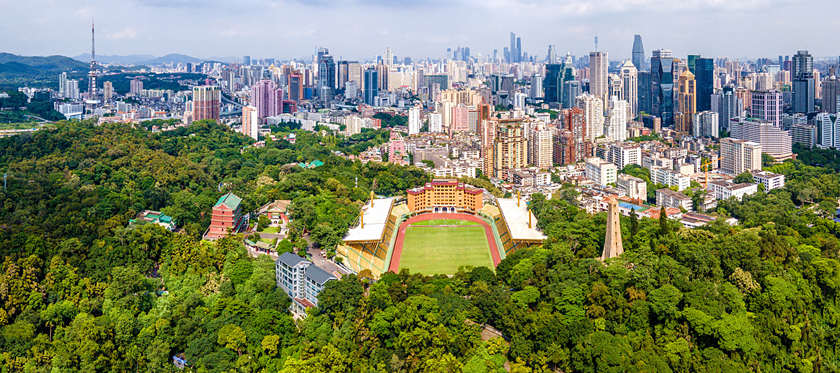Chinese Name: 越秀公园 Pronunciation: Yuè Xiù Gōng Yuán
English Name: Kuanzhai Alley or Kuanzhai Xiangzi
Suggested Visiting Hours: 1-2 Hours
Admission Ticket Fare: Free of Charge
Opening Hours: 6:00-22:00
Area: 690,000 square meters
Building Time: 1952
Address: No. 960 Jiefang Bei Lu, Yuexiu District, Guangzhou, Guangdong Province, China.
Best Travel Time: March – October. It is fine in March to May and the Guangzhou Garden Expo is often held in this season; You can enjoy the cool in this natural summer resort in June to August; There are flower shows in September to October.
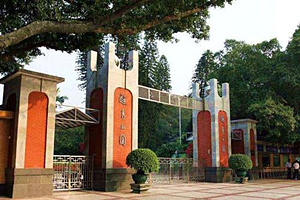
Yuexiu Hill, the main part of Yuexiu Park, is famous for its profound cultural deposits. It has been a tourist attraction since the Qin and Han Dynasties. Dating back to about 2,000 years ago, Zhao Tuo, the king of Nanyue Kingdom who established the first feudal dynasty in Lingnan, had hosted a banquet here for the ministers and treated the envoy appointed by Li Bang(Han Emperor)—Lu Jia with the utmost cordiality.
The former site of Yuewang City is on the Yuexiu Hill. It is said that Zhao Tuo would climb the mountain for fun on the third day of the third lunar month annually and the accompanying officials would perform the dance of Yue ethnic group, therefore this place is called “Gewugang”(Singing and Dancing Ridge) in Chinese, too.
Served as the place for tourism and feast during the South Han Period, the path of Yuewangtai that was called “Huluandao” was decorated with rare flowers and uncommon trees, such as golden chrysanthemum and hibiscus mutabilis linn.
In the Song, Yuan and Ming Dynasties, Yuexiu Hill had become a relatively well-known scenic spot in Guangzhou as it is an important component of “Eight Scenes of Guangzhou”.
In 1925, the Sun Yat-sen Memorial Hall was arranged to be constructed on the Yuexiu Hill by Guangzhou Municipal Administration of Industry and Commerce.
In 1926, residents of Guangzhou spontaneously initiated an amusement gathering to raise money for constructing the park. In December of the same year, the opening ceremony of Yuexiu Park was held.
Since 1950, the Guangzhou Municipal Government has organized the masses to maintain and exploit the historical relics of Yuexiu Hill and comprehensively reorganized the afforest work. Zhuguang, the mayor of Guangzhou at that time, wrote the inscription “Yuexiu Park” for the newly built memorial archway of the gate tower.
A brand-new Yuexiu Park was officially opened to the public on November 7th, 1957 and it became the largest comprehensive park in the city, with an area of more than 750,000 square meters.
It was graded as a 4A national scenic spot in January, 2006.
As the largest park in Guangzhou, Yuexiu Park is said to be constructed by the proposal of Sun Yat-sen. There are several scenic spots in it: The Five-goat Statue, Ancient City Wall of Ming Dynasty, Sun Yat-sen Monument, Zhenhai Tower, Guangzhou Art Gallery, etc.
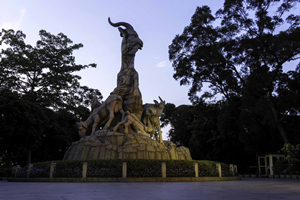
Regarded as the symbol of Guangzhou, the Five-Ram Sculpture was built in 1959 by three sculptors—Yin Jichang, Chen Benzong and Kong Fanwei. It is a major heritage site under the protection of Guangzhou, with 130 pieces of granites, a height of more than 10 meters and a volume of 53 cubic meters. The postures of the five goats are different: the old one holds its head toward the distant place with grain in its mouth; under its feet are two lambs close to each other; another mother goat is feeding its baby with deep maternal love.
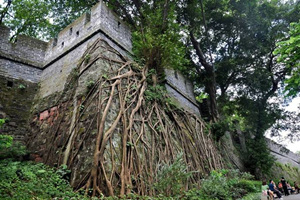
The Ancient City Wall of the Ming Dynasty was built in the Ming Dynasty and is known as the “Three Historic Sites of Guangzhou in the Early Ming Dynasty” together with Zhenhai Tower and Jinzhong Tower. It is the only ancient city wall of Ming Dynasty that is well preserved in Guangzhou and the oldest extant city wall in Guangzhou. There are three parts of this city wall: the western part is from the Great North Gate to Zhenhai Tower, the middle part is Xiaopanlonggang Hill around Zhenhai Tower, while the eastern part is from Guangzhou Art Gallery to the Small North Gate, with a total distance of more than 1,000 meters.
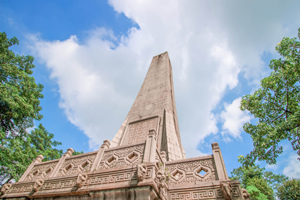
As a great national hero, patriot, pioneer of the democratic revolution in China, Sun Yat-sen was born in Guangdong Province and grew in a normal family. The monument was built in 1929 in memory of this great man. Designed by famous architect Lǚ Yanzhi, this monument is located on the top of Guanyin Mountain, with a height of 37 meters.
There are spiral stairs inside the monument that lead to the its top, the tourists are allowed to overlook the scenery around on the second and the fourth floor over the handrail. At a higher height, there are windows on each floor for looking far into the distance. The 26 stone sculptures in the shape of goat head around the monument are symbols of Guangzhou.
The front of the monument is a giant granite about seven-meter long and four-meter wide, which is engraved with Sun’s testament. It is on the traditional axis of Guangzhou that Sun Yat-sen Monument and Sun Yat-sen Memorial Hall are located, connected as a whole, they become the symbol of modern Guangzhou city and a historical and cultural site protected at the national level.
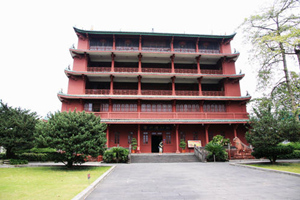
Known as the top scenery of Lingnan, Zhenhai Tower is also called “Five-Storey” as it is of five-storey height. It was built in 1380, the 13th year of the reign of Emperor of Hongwu of the Ming dynasty, by Zhu Liangzu. The original name of it is “Wanghai Tower”, later it was renamed “Zhenhai Tower”, which manifests the best wish for a peaceful motherland. Since 1956, Zhenhai Tower has served as Guangzhou Museum.
As the best preserved and imposing ancient building in Guangzhou, Zhenhai Tower is of 28 meters height and 31 meters width with ample ethnic features. The first and second floors are made of red sandstones while the third floor is made of bricks.
In front of the tower is a pair of stone lions, which was carved in Ming dynasty. During the Qing dynasty, it had been the tallest building in Guangzhou. The Pearl River and Baiyun Mountain can be seen on the top floor of it.
South Gate of Yuexiu Park → Sun Reading-Working Place → Sun Yat-sen Monument → Ancient City Wall of Ming Dynasty → The Five Rams Fairy Pavilion → Nanxiu Lake → Tomb of King Shaowu → Korean Park → Yuexiu Natatorium → Bamboo Forest Site → The Place of Idioms and Fables → Liyutou Sports Zone → Carp’s Garden → North Gate of Yuexiu Park
Main Entrance → Beixiu Lake → Sciophilous Plant Area → Little Angel’s Paradise → Nanxiu Flower Garden → Tomb of King Shaowu → The Five Rams Fairy Pavilion → Ancient City Wall of Ming Dynasty → Guangzhou Museum → Jin Yin Entertainment Park → Children’s Park → East Gate of Yuexiu Park
Take bus 109, 110, 111, 201, b10, b2, 271, 278, 301, 543, 550, 886A, 886 to the North Gate of Yuexiu Park
By Subway
Chinese: 请带我去越秀公园。English: Please take me to Yuexiu Park.
If you go to Yuexiu Park from Guangzhou train station by taxi, it takes about 8 minutes(about 12 yuan), and about 40 minutes(about 80 yuan) when coming from Baiyun International Airport.
By Taxi
If you go to Yuexiu Park from Guangzhou Baiyun International Airport:
Take the Northern Extension Line of Guangzhou Metro Line 3 from T2 terminal of the airport, get off at Jiahewanggang and then transfer Guangzhou Metro Line 2, finally get off at Yuexiu Park and depart from the Exit C. The fare is 7 yuan and the time is within 50 minutes.
If you go to Yuexiu Park from Guangzhou Railway Station:
Take the Guangzhou Metro Line 2 at Guangzhou Railway Station, get off at Yuexiu Park and then depart from Exit C. The fare is 2 yuan and the time is within 15 minutes.
